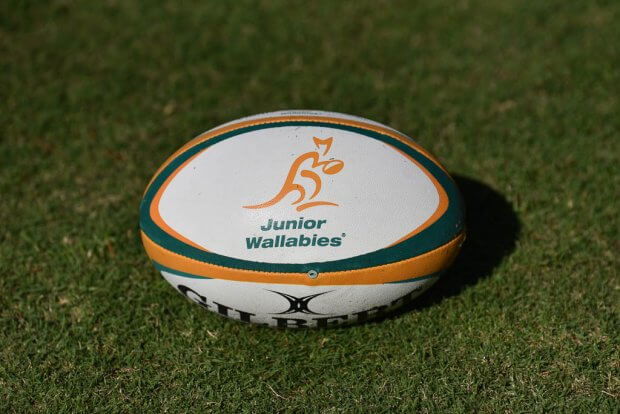
What’s killing the Wallabies: ‘I haven’t seen a ruck stat this low at International rugby’
Rugby Pass has a summary from an Aotearoa Rugby Pod discussion on the Wallabies.
The Aotearoa Rugby Pod gave their insights on what is troubling the Wallabies so far and shared their concerns over the complexity of the game plan and the potential free-for-all that has been presented as a selection policy. The consequences of those elements are a lack of clarity on the field and busy minds that aren’t in the best space for critical decision-making.
Of chief concern was how those elements were disrupting the team’s efficiency around the ruck. “Their attacking breakdown, (you need) tight pods, clarity. ‘I’m carrying, you’re cleaning’,” former All Black James Parsons said. “I haven’t seen a ruck stat this low at international rugby. 88%, they won on their own ball at ruck time. Argentina were at 90%, the All Blacks were at 97%, the Springboks were at 97%.
Parsons added a specific example of poor decision-making, recalling a Wallabies player being penalised for playing the ball on the ground while laying in front of the ref. To the podcast’s panel, it was further evidence of the players being focused on fighting for their positions while trying to execute a whole new system and “overtrying” among it all.
The remedy, in the pundits’ eyes, was to “lean up the menu”. In other words, simplify the game plan so the players are more clear on their roles and can be more present, just playing the game as it happens in front of them. It’s all over the place at the moment. At some point things need to settle and consolidate into patterns and recognisable systems. There are three more tests before the world cup. In the world cup, the Wallabies face Georgia, Fiji, Wales, and Portugal in that order. Is it okay to use Georgia as part of a consolidation process, or is that too late and risky? Is the Fiji match too late and risky?

Tom Brocklebank of Rugby Coach Weekly appears to have valuable experience coaching under 14s, and perhaps some of these tips might be worth Eddie’s consideration:
Some players have been missing tackles in recent matches and are low on confidence – group by similar ability during your tackling activity so your players can experience tackling success.
A lower-ability player is lacking confidence, keeps dropping catches and not passing accurately – playing them with your higher-ability players can mean they are receiving more accurate passes, which are easier for them to catch, and players who are better at catching can secure a less accurate pass.
This looks on the surface to be contradictory advice, but coaches can be tricky like that. Different groupings in player training for different skills I think is the message. And building confidence with simple things is also the message. I didn’t notice any more message in Tom’s piece. Two things might be enough message for players with confidence issues.
Does Eddie pay attention to other coaches, or is he his own man?

Under 20s
Nathan Williamson of rugby.com.au reports that an U20 Rugby Championship has been announced for 2024:
The tournament will kick off on the Gold Coast in April, with teams set to play each other once across a three-week period.
“This is a vital step in the progression of young talent across our member unions as importantly it will provide extra development opportunities each year for players, coaches, team management and match officials, and will allow for better preparation into the World Rugby Championship,” SANZAAR CEO Brendan Morris added.
The U20 Trophy is underway in Kenya. Four teams are still unbeaten going into the last group matches, but it looks like Scotland might be playing Spain for a spot in next year’s U20 Championship.
Wikipedia has a summary here.
Is under 20 too young? Would under 21 be better? Many payers don’t make a professional squad until 22 or 23. Might it not be better to give players not yet in professional squads the development opportunity? Under 23s are common in soccer and ice hockey, and American football doesn’t draft players until they are finished college.

Choosday Choo
With no tier-one rugby test to review this last weekend, I thought I’d dial 150 years into the Wayback Machine courtesy of the Internet Archive, to find a test review to quote – the England v Scotland match of 1873 on p146 at the following link.
The weather appears to have been nothing unusual for that part of the world: when the English twenty arrived in Glasgow they found the country under snow, but this quickly thawed under a hot sun, and was followed by a downpour of rain which continued throughout the day. The turf was consequently spongy and slippery at the top, and the running of the backs was seriously affected.
But play was different in those days: the ground measured 130 yards by 70, and was surrounded by some 5,000 spectators in spite of the miserable weather. The English twenty averaged 12st. 6lb. per man, and their opponents 12st. lib., but England’s fourteen forwards (as compared with Scotland’s thirteen) were at a slight disadvantage in point of weight.
England had three “backs” (presumably that covers full back, and wingers), in addition to one three-quarter back, two half backs, and the 14 forwards. Scotland played an extra three quarter back and one less forward.
Half backs in those days played left half and right half of the scrum – not as a scrum half and fly half. Neither had to feed the scrum – after every tackle, the tackled player put the ball on the ground and the scrum formed around it. And scrums had to scrummage the ball through the opponent’s scrum so that half backs had to deal with a ball kicked out of a giant scrum by opponents, not in a gentle manner nicely presented by their forwards for them to pick up.
Perhaps not surprisingly for a 20 player match, the match was a nil-all draw with no goals scored, but one dropped goal attempt hit the post: a magnificent drop by Freeman from a fair catch some 50 yards from the Scottish goal resulted in a poster, and thus no definite point was gained by either side.
Events similar to the “Suzie scandal” of the 1995 world cup final apparently have an old precedent.
In connection with this match a singular incident occurred. The greasy nature of the ground caused the English captain to direct his men to have bars of leather affixed to the soles of their boots. Freeman and Boyle, who with Finney were considered the most dangerous men on the side, reported, when the cobbler had done his work, that they were each minus a boot. Several of the team proceeded to ransack the cobbler’s shop, but without success, and it was not until after the match—in which Boyle played with a dress boot on his left foot—that the canny tradesman produced the missing articles.
And rugby after-match “traditions” were present already: Scottish hospitality ran high at Glasgow, and this perhaps is accountable for the fact that a certain gallant English forward was found by some of his colleagues shortly after midnight, driving one of Her Majesty’s mail carts to the railway station. They fortunately succeeded in persuading him that he had done quite enough work already, or he might have found out to his discomfort that the verb ” to run in ” could be used by a policeman in the active sense as effectually as by a football player in the neuter.
So, despite the differences, there was still plenty of fun and stories. Perhaps more fun was had then than now.
Curiously, the match review reports the average weight of each team. I suppose it was something of more interest back then. Converted to metric units, it was about 1,500 kg of Englishman against 1,500kg of Scot, within a few tens of kg of the last time they met in the Six Nations, despite 20 players per team in 1873.
So, have we made much progress in 150 years? Was dispensing with 11 forwards an improvement to the game? Is it possible that having two Faf de Klerks and two Nic Whites on the field would ultimately be for the greater good?


